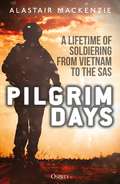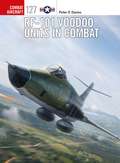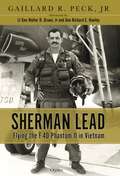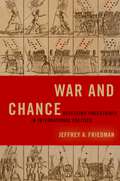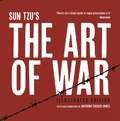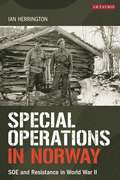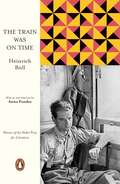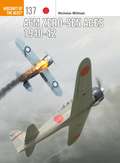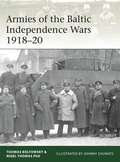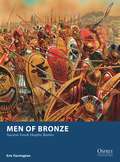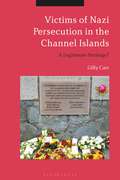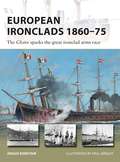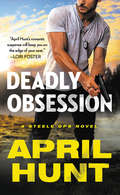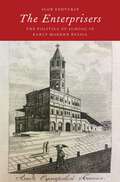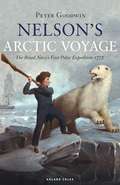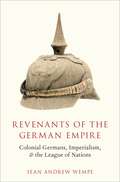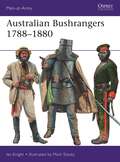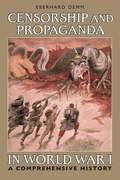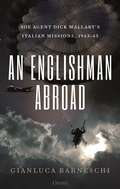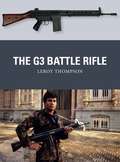- Table View
- List View
The Pianist of Yarmouk
by Aeham AhmadThe moving story of one young man's struggle to find peace during war, and the power of music to bring hope to a desperate nation. BBC Radio 4 'Book of the Week'__________A man, a piano, a Syrian street under siege . . .One morning on the outskirts of war-torn Damascus, a starving man stumbles through a once familiar street - now just piles of rubble. Everything he once knew has been destroyed by famine and war. In despair he turns to his only comfort and joy, music, and pushes his piano into the street and begins to play. He plays of love and hope, he plays for his family and for his fellow Syrians. He plays even though he knows he could be killed for doing so.As word of his act of defiance spreads around the world, he becomes a beacon of hope and even resistance. Yet he fears for his wife and children, his elderly parents. And he is right to be scared, because the more he plays, the more he and his family are drawn into danger.Finally he is forced to make a terrible choice - between staying and waiting to die, or saving himself, but this would mean abandoning his family . . .Aeham Ahmad's spellbinding and uplifting true story tells of the triumph of love and hope, of the incredible bonds of family, and the healing power of music in even the very darkest of places.
Pilgrim Days: From Vietnam to the SAS
by Alastair MacKenzie'We are the Pilgrims, master; we shall go, Always a little further; it may be, Beyond that last blue mountain barred with snow.' If there was ever anyone who went a little further, a little beyond, it was Alastair MacKenzie. In a career spanning 30 years, MacKenzie served uniquely with the New Zealand Army in Vietnam, the British Parachute Regiment, the British Special Air Service (SAS), the South African Defence Force's famed ParaBats, the Sultan of Oman's Special Forces and a host of private security agencies and defence contractors. MacKenzie lived the soldier's life to the full as he journeyed 'the Golden Road to Samarkand'. This extraordinary new work from the author of Special Force: The Untold Story of 22nd Special Air Service Regiment (SAS) vividly documents, in a detail that stuns, the experience of infantry combat in Vietnam, life with the Paras, the tempo of selection for UK Special Forces, covert SAS operations in South Armagh and SAS Counter Terrorist training on the UK mainland, vehicle-mounted Pathfinder Brigade insertions into Angola and maritime counter-terrorism work in Oman.
RF-101 Voodoo Units in Combat (Combat Aircraft)
by Peter E. DaviesMcDonnell's F-101 Voodoo series was in many ways the most interesting of the 'Century Series' fighter programmes of the 1950s, partly because the type's design and intended mission changed radically during a 40-year career. Originally designed as a fighter-bomber, it was converted to be a reconnaissance aircraft, serving alongside the U-2 and RF-8 Crusaders during the Cuban Missile Crisis and the Vietnam War. Although it gained a reputation as a difficult aircraft to handle, the jet's supersonic speed and newly-developed camera suite enabled it to conduct vital low-altitude photo-reconnaissance missions over heavily-defended target areas. In combat, the RF 101 was usually 'first in-last out' for strike missions. This made it a ready target, with a solo aircraft flying straight and level to gather target photo evidence at low-altitude offering enemy gunners plenty of opportunity to shoot the Voodoo down. This study tells the combat stories of this extraordinary aircraft, highlighting the difficulty of the missions on which it was sent and the courage of its pilots.
Russian Soldier vs Japanese Soldier: Manchuria 1904–05 (Combat)
by David CampbellAt the turn of the 20th century, the region of Manchuria sat atop a potentially catastrophic political fault line; the ancient strength of China was crumbling, leaving opportunities for both Russia and Japan to claw out new territories from the edges of that dying empire. Russian pride would contend with Japanese ambition in a conflict that ushered in the age of massed armies fighting on battlefields that were being redefined by the new tools of war such as newer, larger artillery pieces, and the use of machine guns in pitched battles. The vast, but over-stretched Russian Army was expected to steamroller its far smaller opponent, but the aggressiveness and zeal of the more modern Japanese military confounded expectations.Examining these two armies in detail, this fully illustrated study tells the story of how these two empires clashed in the Russo-Japanese War, heralding a new phase in modern warfare as World War I loomed on the horizon.
Sherman Lead: Flying the F-4D Phantom II in Vietnam
by Gaillard R. Peck, JrWritten by a pilot who flew near-daily combat missions, this engrossing book is the story of one man, his colleagues and his machine, the mighty F-4 Phantom II, at war.Sherman Lead is the gripping story of a year flying the F-4 in combat during the Vietnam War, told through the eyes of a fighter pilot. Operating out of Ubon Royal Thai Air Base, Thailand in 1968–69, Gail Peck and his squadronmates in the 433rd Tactical Fighter Squadron of the 8th Tactical Fighter Wing were tasked with flying combat missions into North Vietnam and Laos at this time as part of Operations Rolling Thunder and Steel Tiger. The F-4 was heavily involved in the air-to-ground mission at this time, with targets being well defended by enemy anti-aircraft artillery and surface-to-air missiles. Gail Peck's arrival in-theatre coincided with the beginning of electro-optical and laser guided 'smart' bomb combat operations. There were periods of fierce combat interspersed with lulls, and the fighting was intense and unforgettable to those who participated. Some men lived through it, and others died without a clear understanding of why.
Sniping Rifles on the Eastern Front 1939–45 (Weapon)
by Martin PeglerThe Soviet Union had developed a significant sniping force by 1939, but the extraordinary skill and cunning displayed by Finnish snipers during the Winter War forced the Soviets to innovate. On the other side, German sniping suffered from a lack of standardization of weapons and a lack of marksmen deployed at the start of the Great Patriotic War (1941–45). There were few heroes in the conflict, but on both sides, the snipers were idolized – especially on the Soviet side, gaining almost mythical status.As well as traditional bolt-action weapons, both sides used several types of semi-automatic rifle, such as the SVT-38 and the Gew 41. Offering greater firepower at the expense of long-range accuracy, such weapons would be profoundly influential in the postwar world. Fully illustrated, this absorbing study investigates the development of sniping weapons and techniques on World War II's Eastern Front.
World War II Battle by Battle
by Nikolai BogdanovicThis compact gift book takes thirty of World War II's most significant clashes, both the famous and the lesser known, and presents their stories in a concise, easy to digest format, accompanied by beautiful Osprey artwork plates in full colour that illuminate a key moment in each battle.World War II was the single greatest conflict the world has ever known, fought in theatres all around the globe, and many of its battles – Stalingrad, Monte Cassino, the Battle of Britain – are household names. While the Western Front in Europe is often what first comes to mind, bitter and bloody battles were also fought in Eastern Europe, Africa, Asia and the Pacific, on land, at sea, and in the air, and their many stories help illuminate both the scale and the varying character of the conflict.
War and Chance: Assessing Uncertainty in International Politics (Bridging the Gap)
by Jeffrey A. FriedmanUncertainty surrounds every major decision in international politics. Yet there is almost always room for reasonable people to disagree about what that uncertainty entails. No one can reliably predict the outbreak of armed conflict, forecast economic recessions, anticipate terrorist attacks, or estimate the countless other risks that shape foreign policy choices. Many scholars and practitioners therefore believe that it is better to keep foreign policy debates focused on the facts - that it is, at best, a waste of time to debate uncertain judgments that will often prove to be wrong. In War and Chance, Jeffrey A. Friedman shows how foreign policy officials often try to avoid the challenge of assessing uncertainty, and argues that this behavior undermines high-stakes decision making. Drawing on an innovative combination of historical and experimental evidence, he explains how foreign policy analysts can assess uncertainty in a manner that is theoretically coherent, empirically meaningful, politically defensible, practically useful, and sometimes logically necessary for making sound choices. Each of these claims contradicts widespread skepticism about the value of probabilistic reasoning in international politics, and shows how placing greater emphasis on assessing uncertainty can improve nearly any foreign policy debate. A clear-eyed examination of the logic, psychology, and politics of assessing uncertainty, War and Chance provides scholars and practitioners with new foundations for understanding one of the most controversial elements of foreign policy discourse.
The Art of War: Illustrated Edition
by Tzu Sun Anthony Tucker-JonesA new illustrated edition of Sun Tzu's classic ancient Chinese meditation on military strategy and human psychology, with a new commentary that highlight its continued relevance for modern readers.Poetic and immensely readable, The Art of War was written 2,500 years ago and the military manual is still relevant today. A fascinating historical document that sheds light on ancient warfare, it is also a profound meditation on human psychology, interrogating the subjects of leadership, self-discipline and self-awareness.This new edition of the classic work is specially designed for modern readers. It includes an insightful introduction to the historical and philosophical context, and is accompanied by explanation and analysis of how Sun Tzu's lessons have been applied in some of the world's most famous battles. Renowned strategists from Field Marshal Montgomery to General Schwarzkopf have cited the book as an inspiration.The ancient text, attributed to Sun Tzu, is divided into 13 chapters that provide a logical and strategic approach to conflict and competition. Each focuses on a different aspect of warfare, including the importance of planning, managing your forces, decision-making, knowing your strengths and weaknesses, the art of deception and understanding the power of information.This edition, featuring more than 28 evocative photographs, offers a new perspective on a classic work and enables new generations to discover The Art of War and find new applications for the wisdom of Sun Tzu.
Special Operations in Norway: SOE and Resistance in World War II (International Library of War Studies)
by Ian HerringtonBetween 1940 and 1945, Britain's Special Operations Executive (SOE) carried out sabotage and organised resistance across occupied Europe. Over 5 years, SOE sent over 500 agents into Norway to carry out a range of operations from sabotage and assassination to attempts to organise an underground guerrilla army. This book is the first multi-archival, international academic analysis of SOE's policy and operations in Norway and the influences that shaped them, challenging previous interpretations of the relationship between this organisation and both the Norwegian authorities and the Milorg resistance movement.
The Train Was on Time (Penguin European Writers)
by Heinrich Boll'Böll's novel blows a stent in the human heart. . . It feels more necessary than ever.' Anna Funder, from the introduction Twenty-four-year-old Andreas, a disillusioned German soldier, is travelling on a troop train to the Eastern Front when he has an awful premonition that he will die in exactly five days. As he hurtles towards his death, he reflects on the chaos around him - the naïve soldiers, the painfully thin girl who pours his coffee, the ruined countryside - with sudden, heart-breaking poignancy. Arriving in Poland the night before he is certain he will die, he meets Olina, a beautiful prostitute, and together they attempt to escape his fate...'His work reaches the highest level of creative originality and stylistic perfection' Daily Telegraph'Boll combines a mammoth intelligence with a literary outlook that is masterful and unique' Joseph Heller, author of Catch-22'My most-admired contemporary novelist' John Ashbery'From the moment I stepped on board the troop train with Private Andreas, concerns pertaining to my own world fell away completely. Holding this impelling book is tantamount to holding the young soldier's fate in one's hands. It is impossible to let go.' Claire-Louise Bennett, author of Pond
A6M Zero-sen Aces 1940-42 (Aircraft of the Aces)
by Nicholas MillmanThe Mitsubishi A6M Zero-sen was Japan's Spitfire. In continuous development and operational service from the time of the Sino-Japanese war in 1940 to the end of the Pacific War in 1945, it is held in almost mythical awe, similar to Britain's legendary fighter aircraft. At the time of its operational debut the fighter's design features offered the revolutionary combination of an all-round vision canopy, cannon armament and a jettisonable drop tank giving it phenomenal range. Together with the flying and tactical proficiency of superbly trained pilots, this made the Zero-sen a true strategic fighter, spearheading Japan's offensive in the Pacific. It was also the mount of a plethora of successful and flamboyant naval aces engaged in both sea and land campaigns. This volume, the first of two on the A6M Zero-sen, covers the use of the A6M2 variant from its debut in China to the Solomons Campaign, and also tells the story of the A6M2-N "Rufe" floatplane fighter aces.
Armies of the Baltic Independence Wars 1918–20 (Elite)
by Nigel Thomas Toomas BoltowskyImmediately following the end of World War I, amid the collapse of the German, Austro-Hungarian and Russian Empires, bitter fighting broke out in the Baltic region as Poland, Finland, Estonia, Latvia and Lithuania struggled for their independence, and Red and White Russian armies began their civil war. There were also German forces still active in what had been the northern end of Germany's Eastern Front. This book offers a concise but detailed introduction to this whole theatre of war, focusing on the Estonian, Latvian, Lithuanian and relevant German and Russian forces, plus Finnish, Danish and Swedish contingents. For each region there is a detailed map as well as meticulous orders-of-battle and insignia charts. Detailed for the first time in the English language, this fascinating book concisely tells the story of the birth of these Baltic nation states.
Men of Bronze: Ancient Greek Hoplite Battles (Osprey Wargames)
by Eric FarringtonMen of Bronze is a wargame that allows you to play out Classical Greek hoplite battles on the tabletop. Players are Strategoi (generals) leading phalanxes of bronze-clad warriors in pursuit of fame, glory, and the honor of their city-states. To win such prizes, however, you must prove your mettle, display your valor, and bring the other Strategoi to their knees!Designed to recreate small battles or larger skirmishes with 50–80 figures per side, each army will have its own unique mix of rules, advantages, backgrounds, and abilities. Strategoi must understand and appreciate the strengths and weaknesses of their forces in order to win glory on the battlefield. Of course, there's no telling what tricks a rival Strategos might have up their tunic sleeves…
Spain at War: Society, Culture and Mobilization, 1936-44
by James MatthewsSpain's principal and most devastating war during the 20th century was, unusually for most of Europe, an internal conflict. During the Spanish Civil War of 1936 to 1939 two competing armies – the insurgent and counterrevolutionary Nationalist Army and the Republican Popular Army – engaged in a conflict to impose their version of Spanish identity and the right to shape the country's future. In its aftermath, Francoist Spain remained on a war footing for the duration of the Second World War. In spite of the unabated flood of books on the Spanish Civil War and its consequences, historians of Spain in the 20th century have focused relatively little on the interaction of society and culture, and their roles in wartime mobilization. Spain at War addresses this omission through an examination of individual experiences of conflict and the mobilization of society. This edited volume acknowledges the agency of low-ranking individuals and the impact of their choices upon the historical processes that shaped the conflict and its aftermath. In doing so, this new military history provides a more complex and nuanced understanding of Spain's most intense period of wartime cultural mobilization between the years 1936 to 1944 and challenges traditional political accounts of the period.
Victims of Nazi Persecution in the Channel Islands: A Legitimate Heritage?
by Gilly CarrVictims of Nazi Persecution from the Channel Islands explores the fight and claims for recognition and legitimacy of those from the only part of the British Isles to be occupied during the Second World War. The struggle to have resistance recognised by the local governments of the islands as a legitimate course of action during the occupation is something that still continues today. Drawing on 100 compensation testimonies written in the 1960s and newly discovered archival material, Gilly Carr sheds light on the experiences of British civilians from the Channel Islands in Nazi prisons and concentration camps. She analyses the Foreign Office's treatment of claims from Islanders and explores why the islands' local governments declined to help former political prisoners fight for compensation. Finally, the book asks why 'perceived sensitivities' have stood in the way of honouring former political prisoners and resistance memory over the last 70 years in the Channel Islands.The testimonies explored within this volume help to place the Channel Islands back within European discourse on the Holocaust and the Second World War; as such, it will be of great importance to scholars interested in Nazi occupation, persecution and post-war memory both in Britain and Europe more widely.
European Ironclads 1860–75: The Gloire sparks the great ironclad arms race (New Vanguard)
by Angus KonstamFrom Spain to Russia, and from Ottoman Turkey to Bismarck's Prussia, this book explores 15 years that transformed European naval warfare.When the Gloire slid down the Toulon slipway in 1859, it changed sea power forever. With this ship, the world's first oceangoing ironclad, France had a warship that could sink any other, and which was proof against the guns of any wooden ship afloat. Instantly, an arms race began between the great navies of Europe – first to build their own ironclads, and then to surpass each other's technology and designs.As both armour and gun technology rapidly improved, naval architects found new ways to mount and protect guns. The ram briefly came back into fashion, and Italian and Austro-Hungarian fleets fought the ironclad era's great battle at Lissa. By the end of this revolutionary period, the modern battleship was becoming recognizable, and new naval powers were emerging to dominate Europe's waters.
Deadly Obsession (Steele Ops #1)
by April HuntGet ready for an adrenaline rush as a CSI agent and her childhood crush track a killer in this "romantic suspense that will keep you on the edge of your seat" (Lori Foster, New York Times bestselling author). After a lifetime spent in and out of hospitals, Zoey Wright is tired of playing it safe. She's ready to take charge of her own life and get out of her comfort zone, starting with a new job as a CSI agent. But when her childhood crush Knox Steele gets pulled onto her case, Zoey needs to put her feelings for him aside or more women will die at the hands of the serial killer preying on her hometown. Former Army Ranger Knox Steele is back in Washington to help his brothers open an elite private security firm. He never expected to stumble onto a crime scene, or see his best friend's little sister working it. Zoey is all grown up now, and the attraction between them is electric, despite his best efforts to resist it. But all that changes for Knox when he realizes the victims have one thing in common . . . and Zoey might be next. "Deadly Obsession is a page turner full of sizzling passion, gritty action, and thrilling danger!" --Rebecca Zanetti, New York Times bestselling author "Once again, April Hunt nails it! Expect masterful storytelling interwoven with sizzling tension and high-stakes suspense."-- Cristin Harber, New York Times bestselling author
The Enterprisers: The Politics of School in Early Modern Russia
by Igor FedyukinThe Enterprisers traces the emergence of the "modern" school in Russia during the reigns of Peter I and his immediate successors, up to the accession of Catherine II. Creation of the new, secular, technically-oriented schools based on the imported Western European blueprints is traditionally presented as the key element in Peter I's transformation of Russia. The tsar, it is assumed, needed schools to train officers and engineers for his new army and the navy, and so he personally designed these new institutions and forced them upon his unwilling subjects. In this sense, school also stands in as a metaphor for modern institutions in Russia in general, which are likewise seen as created from the top down, by the forceful state, in response to its military and technological needs. Yet, in reality, Peter I himself never wrote much about education, and while he championed "learning" in a broad sense, he had remarkably little to say about the ways schools and schooling should be organized. Nor were his general and admirals, including foreigners in Russian service, keen on promoting formal schooling: for them, practical apprenticeship still remained the preferred method of training. Rather, as Fedyukin argues in this book, the trajectories of institutional change were determined by the efforts of "administrative entrepreneurs"-or projecteurs, as they were also called-who built new schools as they sought to achieve diverse career goals, promoted their own pet ideas, advanced their claims for expertise, and competed for status and resources. By drawing on a wealth of unpublished archival sources, Fedyukin explores the "micropolitics" behind the key episodes of educational innovation in the first half of the eighteenth century and offers an entirely new way of thinking about "Petrine revolution" and about the early modern state in Russia.
Nelson's Arctic Voyage: The Royal Navy’s first polar expedition 1773
by Peter GoodwinIn the summer of 1773 the 14-year old Horatio Nelson took part in an expedition to the Arctic, which came close to ending his naval career before it had begun. The expedition was to find a navigable northern passage between the Atlantic and Pacific, and was supported by the Royal Society and King George III. Two bomb vessels HMS Racehorse and Carcass were fitted out and strengthened under the command of Captain Hon. Constantine Phipps. It was an extremely cold Arctic summer and the ships became locked in ice far from Spitzbergen and were unable to cut their way out until days later when the wind changed and the ice broke up. The ships were extricated and returned home.On the trip, the young Nelson had command of one of the smaller boats of the ships, a four-oared cutter manned by twelve seamen. In this he helped to save the crew of a boat belonging to the Racehorse from an attack by a herd of enraged walruses. He also had a more famous encounter with a polar bear, while attempting to obtain a bearskin as a present for his father, an exploit that later became part of the Nelson legend.Drawing on the ship's journals and expedition commander Phipps' journal from the National Archives, the book creates a picture of the expedition and life on board. Using the ships' muster books it also details the ship's crews giving the different roles and ranks in the ships. The book is illustrated using some of the ship's drawings and charts and pictures of many objects used on the ship, while a navigational chart of the route taken has been created from the logbooks. The book also looks at the overall concept of naval exploration as set in train by Joseph Banks and the Royal Society. The fact that the expedition failed as a result of poor planning with potentially tragic results demonstrates the difficulties and uncertainties of such an expedition. It also looks at a great naval commander at the earliest stage of his career and considers how the experience might have shaped his later career and attitudes. Other great captains and voyages are discussed alongside Nelson, including Captain Cook and his exploration of the south seas and the later ill-fated northern journeys of Franklin and Shackleton.
Revenants of the German Empire: Colonial Germans, Imperialism, and the League of Nations
by Sean Andrew WempeIn 1919 the Treaty of Versailles stripped Germany of its overseas colonies. This sudden transition to a post-colonial nation left the men and women invested in German imperialism to rebuild their status on the international stage. Remnants of an earlier era, these Kolonialdeutsche (Colonial Germans) exploited any opportunities they could to recover, renovate, and market their understandings of German and European colonial aims in order to reestablish themselves as "experts" and "fellow civilizers" in discourses on nationalism and imperialism. Revenants of the German Empire: Colonial Germans, Imperialism, and the League of Nations tracks the difficulties this diverse group of Colonial Germans encountered while they adjusted to their new circumstances, as repatriates to Weimar Germany or as subjects of the War's victors in the new African Mandates. Faced with novel systems of international law, Colonial Germans re-situated their notions of imperial power and group identity to fit in a world of colonial empires that were not their own. The book examines how former colonial officials, settlers, and colonial lobbies made use of the League of Nations framework to influence diplomatic flashpoints including the Naturalization Controversy in Southwest Africa, the Locarno Conference, and the Permanent Mandates Commission from 1927-1933. Sean Wempe revises standard historical portrayals of the League of Nations' form of international governance, German participation in the League, the role of interest groups in international organizations and diplomacy, and liberal imperialism. In analyzing Colonial German investment and participation in interwar liberal internationalism, the project challenges the idea of a direct continuity between Germany's colonial period and the Nazi era.
Australian Bushrangers 1788–1880 (Men-at-Arms)
by Ian KnightThe first 'bushrangers' or frontier outlaws were escaped or time-expired convicts, who took to the wilderness – 'the bush' – in New South Wales and on the island of Tasmania. Initially, the only Crown forces available were redcoats from the small, scattered garrisons, but by 1825 the problem of outlawry led to the formation of the first Mounted Police from these soldiers. The gold strikes of the 1860s attracted a new group of men who preferred to get rich by the gun rather than the shovel. The roads, and later railways, that linked the mines with the cities offered many tempting targets and were preyed upon by the bushrangers. This 1860s generation boasted many famous outlaws who passed into legend for their boldness. The last outbreak came in Victoria in 1880, when the notorious Kelly Gang staged several hold-ups and deliberately ambushed the pursuing police. Their last stand at Glenrowan has become a legendary episode in Australian history. Fully illustrated with some rare period photographs, this is the fascinating story of Australia's most infamous outlaws and the men tasked with tracking them down.
Censorship and Propaganda in World War I: A Comprehensive History (International Library of Twentieth Century History)
by Eberhard DemmThis book demonstrates how people were kept ignorant by censorship and indoctrinated by propaganda. Censorship suppressed all information that criticized the army and government, that might trouble the population or weaken its morale. Propaganda at home emphasized the superiority of the fatherland, explained setbacks by blaming scapegoats, vilified and ridiculed the enemy, warned of the disastrous consequences of defeat and extolled duty and sacrifice. The propaganda message also infiltrated entertainment and the visual arts. Abroad it aimed to demoralize enemy troops and stir up unrest among national minorities and other marginalized groups. The many illustrations and organograms provide a clear visual demonstration of Demm's argument.
An Englishman Abroad: SOE agent Dick Mallaby’s Italian missions, 1943–45
by Gianluca BarneschiBased on 20 years of research, Gianluca Barneschi has uncovered the true story of a real-life James Bond. The debonair Special Operations Executive agent Richard 'Dick' Mallaby was the first Briton to be sent to Italy as an SOE operative, parachuted unceremoniously into Lake Como in August 1943. Arrested and initially tortured by the Italian authorities, he managed to sweet-talk his way out of trouble, and helped Marshal Pietro Badoglio and King Victor Emmanuel III escape to the Allied lines. He also helped negotiate the armistice with Italy, for which he was awarded the Military Cross. He was back in action in 1945, when he crossed into Fascist-controlled northern Italy from Switzerland but was swiftly captured and interrogated by the SS. Narrowly avoiding a firing squad once again, he helped to secure the surrender of 800,000 German forces in Italy in May 1945.
The G3 Battle Rifle (Weapon)
by Leroy ThompsonDuring the Cold War, the G3 was one of the world's pre-eminent battle rifles. Developed in France and Spain after 1945, the rifle was produced by the German arms manufacturer Heckler & Koch. Adopted by more than 40 countries and produced on licence by many more, it was widely employed during colonial wars in Africa, insurgencies in Latin America and conflicts in the Middle East, but perhaps its widest use was in the Iran–Iraq War. Variants of the G3 have also seen substantial usage among Special Forces including Britain's Special Boat Service and the US Navy SEALs. Semi-automatic versions, especially the HK91 and HK93, remain popular in the United States, and the G3-derived HK11 and HK21 family of light machine guns have also been widely adopted by military and law-enforcement units across the world. Fully illustrated with specially commissioned artwork, this study examines one of the iconic weapons of the Cold War era.

